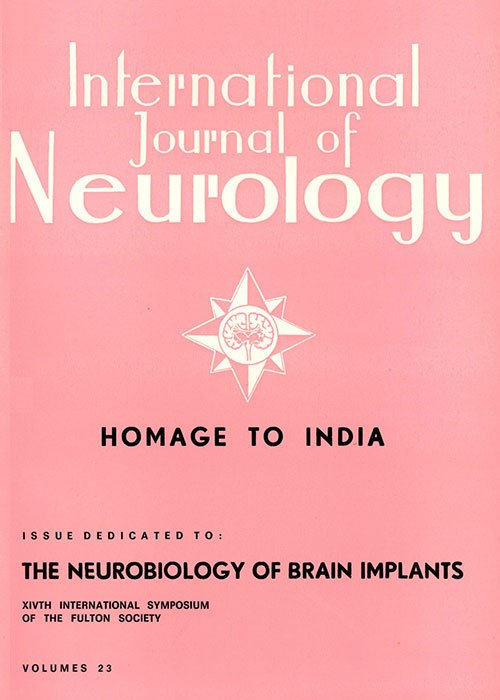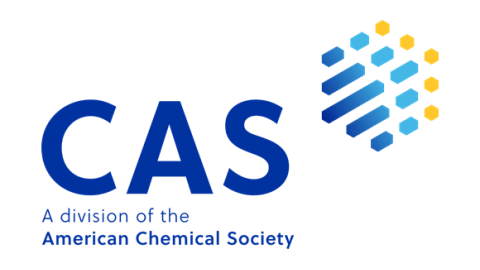Full Issue
DOI:
https://doi.org/10.62486/ijn198943Abstract
The combined issue (Numbers 1–2–3–4) of Volume 23 of the International Journal of Neurology (1989) was dedicated to The Neurobiology of Brain Implants, marking a landmark collection that captured the state of experimental and clinical neurotransplantation at the close of the 1980s. Edited by Víctor Soriano, the volume explored cellular, physiological, and surgical approaches to neural grafting and brain repair, with special emphasis on Parkinson’s disease, cortical regeneration, and spinal cord repair.
The issue opened with Anthony J. Castro’s study on fetal neocortical transplants for cortical lesion repair in newborn rats, which combined anatomical and electrophysiological data to demonstrate partial functional recovery and neuronal integration within host circuits. Experimental neuroregeneration was also examined by Shou-Shu Jiao, Yu-Jun Liu, Yuan-Shen Wang, and Qing Cai, who attempted motor cortex transplantation in adult rats to reverse paralysis, achieving limited but measurable recovery of motor function.
Constantino Sotelo and Rosa-Magda Alvarado-Mallart investigated Purkinje cell replacement in hereditary cerebellar ataxia, describing mechanisms of synaptic integration and graft maturation, while Urmi Vaidya and Michael R. Wells reported that fetal spinal cord overlays could incorporate and differentiate within adult host tissue, suggesting potential for spinal cord repair.
A major clinical breakthrough was represented by Caroline M. Tanner, Christopher G. Goetz, Richard D. Penn, and collaborators, who presented an 18-month follow-up of autologous adrenal medullary transplants into the striatum of Parkinson’s patients. Their study documented modest but sustained improvement in motor function, inspiring subsequent trials worldwide. Complementary clinical assessments were published by Ray L. Watts, Roy Bakay, and colleagues, and by Abraham Lieberman, Joseph Ransohoff, and Peter Berczeller, who provided further evidence for the safety and partial efficacy of adrenal-to-caudate grafting.
Parallel approaches were explored in Asia and Latin America: Chung-Cheng Wang and team reported on adrenal and fetal medullary tissue implantation via open microsurgery in Parkinson’s disease, while Ignacio Madrazo, Rebecca Franco-Boulard, Maricarmen Aguilera, and Feggy Ostrosky-Solís summarized Mexico’s pioneering human brain grafting experiences, which became internationally influential in the field of restorative neurology.
On the experimental front, Pedro and Tauba Pasik with Julián Martínez analyzed non-fetal implants into the dopamine-deprived neostriatum, particularly sympathetic ganglia transplants, shedding light on reinnervation patterns and dopaminergic compensation. David E. Scott, Wutian Wu, and Arthur Gilman studied neural grafting within the mammalian hypothalamus, exploring integration of neuroendocrine regulatory circuits.
Daniel P. Kimble contributed a historical and conceptual overview of cholinergic brain implants, tracing their evolution from experimental models to potential therapeutic tools, while Yumiko Kaseda, Vay R. Simon, and Walter C. Low demonstrated GABAergic modulation of cholinergic septal neurons transplanted into the hippocampal formation, illuminating neurotransmitter balance in graft-host interactions.
This issue collectively showcased the transition from experimental neurografting to early clinical neurorestoration, combining molecular, anatomical, and functional perspectives. It stands as a milestone in the journal’s history — documenting the birth of modern neural transplantation research, a precursor to stem-cell therapy and deep brain stimulation in contemporary neuroscience.
Downloads
Published
Issue
Section
License
Copyright (c) 1989 International Journal of Neurology (Author)

This work is licensed under a Creative Commons Attribution 4.0 International License.
The article is distributed under the Creative Commons Attribution 4.0 License. Unless otherwise stated, associated published material is distributed under the same licence.







